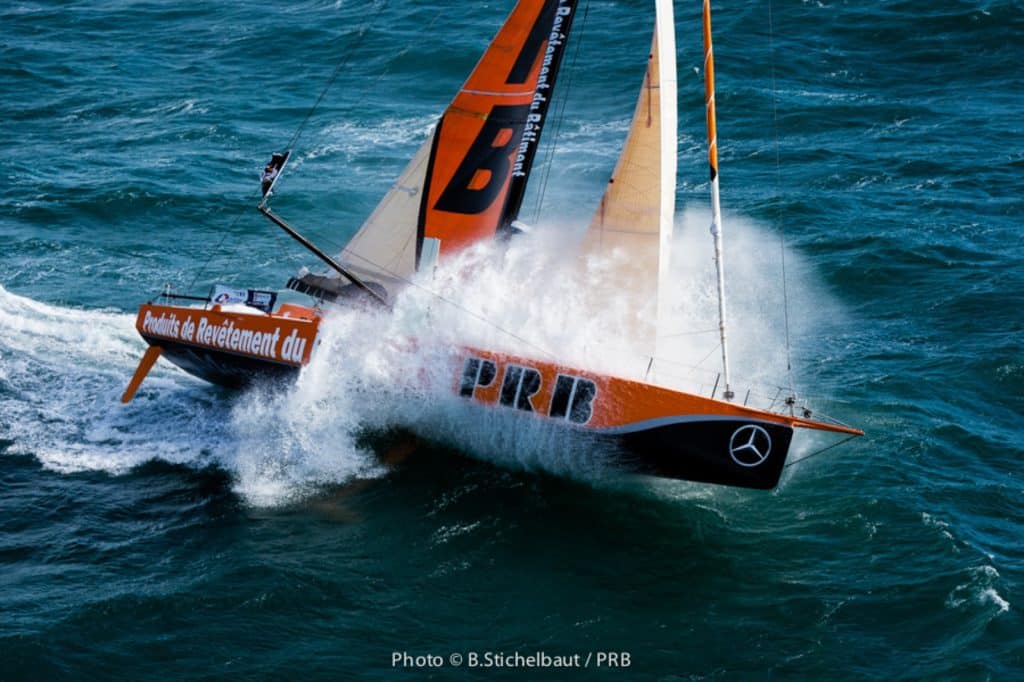
While much of the Vendée Globe’s pre-race hype has been focused on the lateral foils, there have been four years of tandem development in what is arguably the most important equipment on the boats — the sails. The sail inventory is one of the most closely guarded secrets of the race, says North Sails sail designer Gautier Sergent, for inside the quiver lies each skipper’s round-the-world strategy.
“The sail inventory is ultimately influenced by the skipper’s experience and how they handle the transitions,” says Sergent. “Some prefer to go around the high-pressure systems, and some go through them. Some guys want to go fast in the Southern Ocean, for example, and believe that is where they will make the most gains, while others prefer to get to the bottom of the south Atlantic earlier and build enough of a gap to be perhaps another system ahead.”
What is new for this fleet in terms of sail material?
[North Sails’] downwind sails will now be 3Di Force, which is a downwind version of our 3Di. It will provide them with a much bigger range than before. It’s lightweight but much more stable [than Cuben Fiber, previously used], so the guys can press on the sails and sail hotter angles. With these sails, the foilers can luff up a few degrees, make good use of the foil, and gain righting moment. The 3Di Force has a high Dyneema content, which makes it more durable. With downwind sails, we’re not looking for that last bit of stability we get from carbon. We’re happy to make the gain with tenacity and durability.
How has the use of foils changed the downwind inventories for this race?
As soon as the [foil] boats hit 15 knots, they really benefit from the foil, but below that, they have the additional drag compared to standard boats, so they still need downwind sails to sail deep VMG slow mode. That same sail needs to be able to handle higher angles and higher loads without losing shape.
What’s the effect on the sail plan once the boats are on the foil?
The loads increase dramatically when they get additional righting moment from the foil. When they’re reaching, [righting moment] can spike from 26 to 36 metric tons. That’s a lot.
What’s the standard inventory for this race?
We are allowed nine sails, one less than the last Vendée. It’s not as simple as taking one sail away and hoping the gap will be fine. We had to come up with an entirely new concept. The inventories include the mainsail, three headsails and four downwind sails. [Teams] can choose between masthead and fractional with those, and there is a full quiver of shapes and flavors available to them.
Have there been any major advances in sail-control systems since the last race?
We’ve been experimenting with top-down furlers. They make for a safer furl, but they also require a lot more winch power to get a nice furl, so it’s a compromise between a tight furl and the winching capability. The 3Di Force furls better than the Cuben because it’s more stable and stiffer, which helps with furling.
We also worked extensively with the designers on deck layouts, to simplify them. In the last race, the guys were running short sheets, which would require them to go to leeward. When you’re going 20 knots, to go and connect that on your own is dangerous. Sometimes they wouldn’t go to leeward, so it wasn’t trimmed perfectly. The clew heights have come up a bit without compromising performance, so now they can trim them more properly. Are the masts more reliable this time?
The rigs are one-design and have been engineered with safety in mind, but when they were designed, there was a limitation on the righting moment at 25 metric tons. The foils have boosted that, however, so the sailors will have to be conservative at times and not go as fast as they can, or they’ll risk dropping the rig. It’s a fine line.









